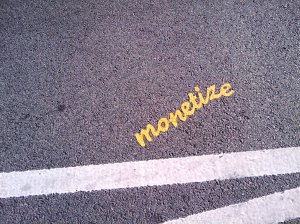Have you heard the phrase unconference?
It’s been applied—or maybe misapplied—to almost any gathering organized by participants rather than by hosts. It’s a way to have a professional conference without all the trappings that often get in the way of true communication.
We’ve all been to an unconference, of course. When you emerge, haggard and exhausted from a hotel conference room seminar and sink with happiness into a comfortable lobby chair, and engage in the best conversation of the day with a fellow wanderer, you’re at an unconference.
When you follow up with a speaker and get her to engage on the issues facing you and your practice (unaddressed in the formal presentation), you’ve created your own unconference. You have grasped the sinews of the conference, which had been organized to the tiniest detail, and bent them to be responsive to you. When you do that, and when you and your conversant both come away richer, you’ve become an unconference aficionado.
I recall hearing about the concept at—of course—a conference a few years ago, where a Tennessee bar leader urged attendees to think creatively. And I’ve been intrigued ever since by how we all learn, really learn, what we need to learn. And that learning happens only occasionally in a seminar room.
A few weeks ago, I participated in an unconference in the back of a cab. As I shared a ride from the airport into the San Francisco NABE conference, I had a great conversation with a Bar colleague whom I only sometimes get to converse with. We work close by, but the day-to-day always takes precedence over the leisurely chat. In the cab’s enforced lethargy, I was able to gain valuable insight into his thoughts and vision for the organization.
The ensuing conference itself was great, but its high points were almost all marked by conversations like that—brief, shining moments of genuineness and clarity. Who could wish for better?
As it is Change of Venue Friday, I must share one odd view I got during that cab ride (but it’s related, I promise). As we spoke, I looked out the taxi window and was surprised to see a sign bearing a legal term. “First Amendment,” it proclaimed. But was it a dive bar, a political office, a nostalgic cry? (Its retro font immediately put me in mind of the TV show Cheers. Young readers, ask someone old what that means.)
I snapped this bad photo:
But it wasn’t until later that I discovered the meaning on the organization’s website:
“1AM, short for First Amendment, is a gallery dedicated to street and urban art. Monthly themed exhibitions will feature artists from San Francisco to around the world. Seeing is believing, so come witness the 1AM movement.”
And they’re on Facebook and Twitter too.
So on this Friday, when I consider conferences and the people who transform them, enjoy looking at some art of people wholly dedicated to all the enumerated rights, including that to peaceably assemble.
When I’m next in San Francisco, I know I will return to 1AM (despite the font choice).
Have a communicative weekend.
Follow @azatty










